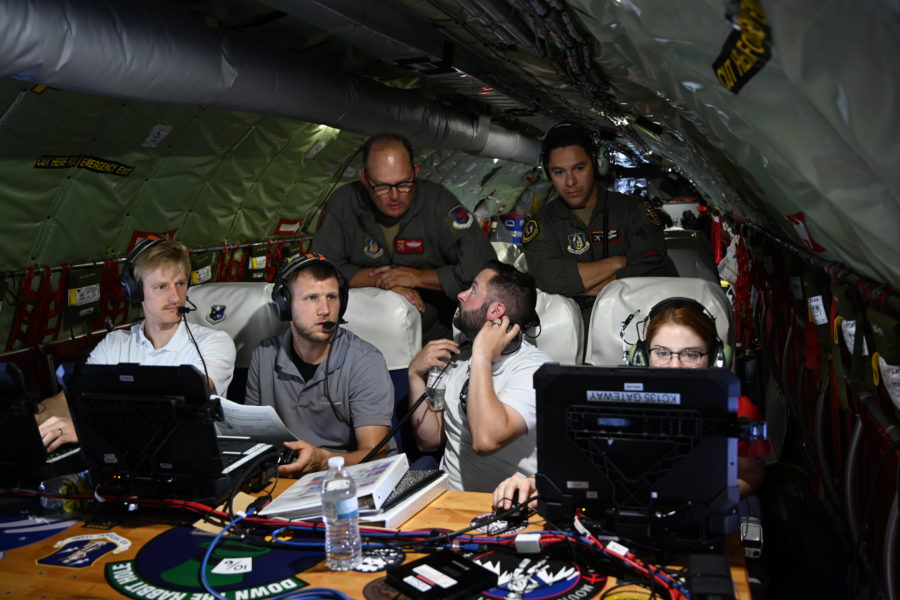The Department of the Air Force is making strides on its contribution to the Department of Defense’s ambitious joint all-domain command and control effort, according to a report from the top government watchdog released Jan. 13.
However, questions remain about whether the Air Force will properly make use of its new capabilities, the study from the Government Accountability Office stated.
As part of the DOD’s JADC2 effort to connect sensors, battle managers, and shooters across the globe, the Air Force is developing the Advanced Battle Management System—ABMS was initially planned as the successor to the E-8 JSTARS aircraft but is now envisioned as a network of sensors and connected technologies intended to promote rapid data sharing among a plethora of weapon systems.
In this latest report, the GAO praised the Air Force for its progress on ABMS and JADC2 since 2020, when the agency charged the service with needing to decide what it wanted AMBS to do and then develop the technology and estimate the cost accordingly.
The watchdog was less positive about the broader Department of Defense, though, charging that its vision of JADC2 was still too vague and effort lacked uniformity among the services.
So far, the Air Force has defined two ABMS efforts. The first, known as Capability Release 1, is aimed at enabling the new F-35 Lightning II fighter to connect with command and control centers, including by turning airborne platforms such as the KC-46 Pegasus tanker into a data link.
CR-1 was originally intended to include the F-22 Raptor as well, allowing the F-35 and F-22 to share data, which they currently cannot do because of differences in their communication systems.
But plans to integrate the F-22 were scrapped, the GAO report noted, in part because of the Air Force’s plans to move on from the fighter in favor of the still-in-development Next Generation Air Dominance platform. Now, the Air Force hopes to deliver two prototypes to be installed on KC-46s in 2024, the report noted.
The Air Force also plans to field a new Could-Based Command and Control network, known as CBC2, to integrate air defense data to support homeland defense. Previously dubbed Capability Release 2, the system will aggregate and feed data to North American Aerospace Defense Command (NORAD), including from commercial sources, and replace older and disparate systems.
“Fielding CBC2 will help transform how we share data across the joint force,” Gen. Glen D. VanHerck, the head of NORAD and U.S. Northern Command, said in a recent news release.
The department took a significant step forward in that effort Jan. 9, awarding contractor SAIC a $112 million deal for “microservice applications and digital engineering tools for tactical C2 kill chains” as part of CBC2.
“The program is using modern agile software methodologies to revolutionize how the DAF approaches battle management in the future,” Brig. Gen. Luke Cropsey, the Department of the Air Force’s program executive officer for command, control, communications, and battle management, said in a statement. “ABMS will continue to partner with defense contractors, commercial companies and cloud service providers to leverage the best technology for cloud computing, data analytics, and communications.”
The GAO report noted that the Air Force plans to develop initial capabilities for CBC2 in late 2023, but is still in the process of identifying those capabilities—highlighting just some of the work the Air Force still has to do.
“In April 2020, GAO recommended the Air Force develop a plan to mature technologies, develop a cost estimate, and conduct an affordability analysis for ABMS. DOD concurred. The Air Force is taking steps to address the recommendations—through acquisition and planning documents—but needs to do more to fully address them,” the GAO concluded.
However, the report presented a more critical view of the Defense Department’s collective JADC2 effort, arguing that the Pentagon still needs to figure out how to turn an amorphous concept into something more tangible.
“While DOD has made progress in JADC2 planning, it has not yet identified which existing systems will contribute to JADC2 goals or what future capabilities need to be developed,” the report said.
According to the GAO, the lack of an overarching vision has created additional problems by allowing services to work on solving their own connectivity and data issues under the guise of JADC2 instead of developing a military-wide approach.
“The military departments started prioritizing which JADC2-related capabilities to develop based on their own needs, which do not necessarily align with DOD’s highest priorities,” the report said.
